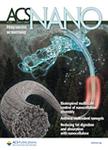版权所有:内蒙古大学图书馆 技术提供:维普资讯• 智图
内蒙古自治区呼和浩特市赛罕区大学西街235号 邮编: 010021

作者机构:Univ Massachusetts Mol & Cellular Biol Program Amherst MA 01003 USA Univ Massachusetts Dept Chem Amherst MA 01003 USA Univ Massachusetts Med Sch Dept Mol Cell & Canc Biol Worcester MA 01605 USA
出 版 物:《ACS NANO》 (ACS纳米)
年 卷 期:2020年第14卷第11期
页 面:15276-15285页
核心收录:
学科分类:07[理学] 070203[理学-原子与分子物理] 0805[工学-材料科学与工程(可授工学、理学学位)] 0703[理学-化学] 0702[理学-物理学]
基 金:NCI [R56 CA207932] University of Massachusetts as part of the Chemistry-Biology Interface Training Program (National Research Service Award from the National Institutes of Health) [T32 GM008515] NIH [R50 CA221780] DK121351 EB022641
主 题:array-based sensing phenotype nanoparticle surface engineering breast cancer cancer stem cell differentiation therapy
摘 要:Cancer stem cells (CSCs) are a crucial therapeutic target because of their role in resistance to chemo- and radiation therapy, metastasis, and tumor recurrence. Differentiation therapy presents a potential strategy for defanging CSCs. To date, only a limited number of small-molecule and nanomaterial-based differentiating agents have been identified. We report here the integrated use of nanoparticle engineering and hypothesis-free sensing to identify nanoparticles capable of efficient differentiation of CSCs into non-CSC phenotypes. Using this strategy, we identified a nanoparticle that induces CSC differentiation by increasing intracellular reactive oxygen species levels. Importantly, this unreported phenotype is more susceptible to drug treatment than either CSCs or non-CSCs, demonstrating a potentially powerful strategy for anticancer therapeutics.